#spacecraft mission
Explore tagged Tumblr posts
Text
Embark on a thrilling cosmic journey with us as we explore the Supra Thermal & Energetic Particle Spectrometer (STEPS), a crucial component of Aditya-L1's ASPEX payload, and discover the secrets of space particles from the Sun before it reaches its final destination at the L1 point!
#SpaceExploration #SolarProbe #STEPS #ASPEXMission #AdityaL1 #SpaceWeather #Sun #CosmicJourney #L1Point #SpaceExploration #SolarParticles #STEPS #BeforeDestination #ASPEX #SpaceWeather #Sun #SpaceScience #CosmicMysteries
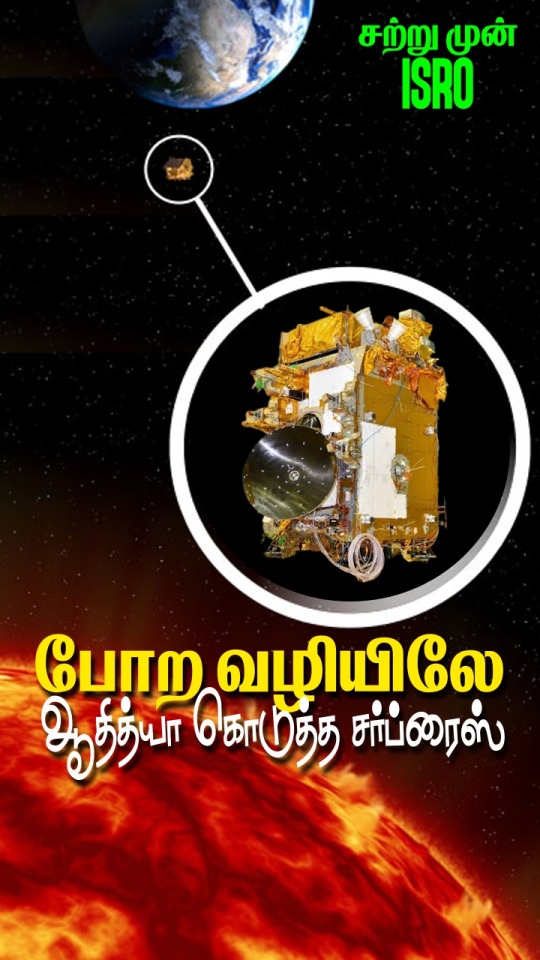
#Supra Thermal & Energetic Particle Spectrometer#Aditya-L1 Solar Probe#ASPEX payload#Earth's magnetic field#spacecraft mission#space research#scientific exploration#cosmic mysteries#MR. GK#electrons in space#L1 point#pre-destination insights.#Chandrayaan-3#ISRO#Lunar Exploration#Pragyaan Rover#Space Discovery#Moon Mission#Lunar Surface#Space Exploration#Lunar Secrets#Space Agency#Lunar Exploration Update.#rover#isro#MADAN GOWRI#TAMIL POKKISHAM
0 notes
Text


"An overall view of the Manned Spacecraft Center's Mission Control Center, during the National Aeronautics and Space Administration's Gemini-7 spaceflight."
Date: December 7, 1965
NASA ID: S65-60037, S65-60039
#GT-7#GT-VII#Gemini 7#Gemini VII#NASA#Gemini Program#Project Gemini#Gemini#Mission Control#Lyndon B. Johnson Space Center#Johnson Space Center#Manned Spacecraft Center#Houston#Texas#December#1965#my post
609 notes
·
View notes
Text
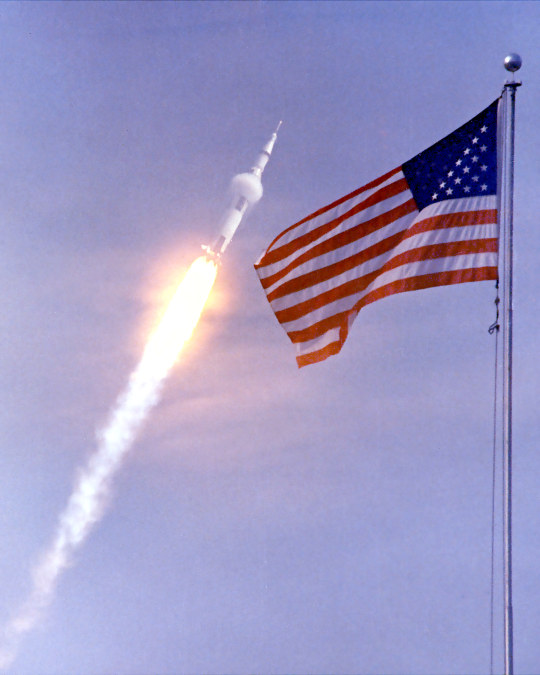
Apollo 11 Launch - 16 July 1969
#NASA#Apollo 11#Saturn V#Rocket#Kennedy Space Center#Launch Complex 39A#Spaceflight#American Flag#Space race#Moon landing#spacecraft#Moon mission
416 notes
·
View notes
Text

Take a look at "Mother Earth" © NASA
#mothers day#earth#ISS#astrophotography#nasa#sky#stars#solar system#space#universe#astronomy#cosmos#galaxy#planet#orion spacecraft#artemis mission
278 notes
·
View notes
Text

Xanthos Saturn Arrival by Tobias Roetsch
170 notes
·
View notes
Text
ON THIS DAY IN SCIENCE: September 5

𝗡𝗔𝗦𝗔’𝗦 𝗩𝗢𝗬𝗔𝗚𝗘𝗥 𝟭 𝗟𝗔𝗨𝗡𝗖𝗛𝗘𝗗 𝗜𝗡𝗧𝗢 𝗦𝗣𝗔𝗖𝗘 🚀
On this day in 1977, NASA launched Voyager 1 on a grand tour of the solar system!
Along its journey, it made groundbreaking discoveries about the gas giants and has since ventured beyond the solar system, continuing to explore the mysterious interstellar space.
During its travels, Voyager 1 made some awesome discoveries.
When it flew by the giant planet Jupiter in 1979, it found a thin ring circling the planet and spotted two new tiny moons named Thebe and Metis.
Then, in 1980, Voyager 1 visited the ringed planet Saturn and uncovered even more secrets!
It found a new ringlet called the G-ring and three little "shepherd" moons — Prometheus, Pandora and Atlas — that help keep Saturn's rings in place.
After finishing its planetary mission, the intrepid Voyager 1 just kept going and going.
In 1998, it became the farthest human-made object from Earth.
Today, it is now located more than 23 billion kilometers from Earth, outside the solar system.
𝗪𝗛𝗬 𝗗𝗢𝗘𝗦 𝗧𝗛𝗜𝗦 𝗠𝗔𝗧𝗧𝗘𝗥?
Voyager 1 a pioneering spacecraft that provided groundbreaking data on Jupiter and Saturn, became the first to enter interstellar space in 2012, and remains the most distant human-made object.
It also carries a golden record as a message to extraterrestrial life.
📝: Ralph Abainza
#NASA#Voyager 1#Jupiter#Thebe#Metis#Saturn#G-ring#shepherd moons#Prometheus#Pandora#Atlas#planetary mission#astronomy#space#spacecraft#interstellar space#science#on this day#solar system
67 notes
·
View notes
Text

Artemis ‖ Mission Astronauts l NASA
The first human mission to the Moon in more than 50 years – including the first woman and Black man ever assigned to a lunar mission


Christina Hammock Koch l Reid Wiseman


Victor Glover l Jeremy Hansen (Canadian)
#artemis 2#artemis 2 mission#nasa#astronaut#space#universe#crewed mission#orion spacecraft#moon#stars#galaxy#solar system#planets#astrophotography#astronomy
490 notes
·
View notes
Text

The Saturn V launch vehicle.
#vintage illustration#science#space#spacecraft#space travel#nasa#launch vehicles#saturn v#apollo saturn#rockets#rocket science#apollo program#wernher von braun#our germans are better than their germans#space flight#moon missions
25 notes
·
View notes
Text

JUPITER | PJ66 Jet N5 | 2024-10-22 17:32 UT
Mission Phase : PERIJOVE 66
Credit : NASA / SwRI / MSSS / Jackie Branc © CC BY
Full project -> https://jackiebranc.site/jupiter-and-its-galilean-moons/
#elloon#jackie branc photographer#Jupiter#Juno#Juno mission#Juno spacecraft#JunoCam#solar system#NASA#nasa jpl#photographers on tumblr#SwRI#MSSS#citizen science#gas giant
8 notes
·
View notes
Text


Tribute art + a really silly GIF. Happy 10th landing anniversary, Philae ^-^
#philae spacecraft#comet landing#rosetta mission#art#tribute art#spacecraft#featured#anniversary#silly
7 notes
·
View notes
Text
It's interesting to note that all but one of the four manned spaceplane to make a flight above the 50 mile US definition of space have had a LOCV, namely:
X-15 no. 3 on X-15 Flight 3-65-97 (1967)
OV-099 Challenger on STS-51-L (1986)
OV-102 Columbia on STS-107 (2003)
VSS Enterprise (N339SS) on PF04 (2014)
Only SpaceShipOne avoided catastrophe. Perhaps that's because it was the safest of the bunch, perhaps it's only due to a small sample size of 15 non-captive flights. I lean towards the latter -- there were a lot of problems across those 15 flights.
#i may have made this post before but regardless im making it now#my thoughts#spaceflight#aviation#meanwhile among capsules only soyuz has suffered an locv#apollo 1 was of course only a ground test#though its possible that the mission would have ended fatally had it actually gone up#also worth noting that theres#lots of bias in these samples though given that no spaceflight-capable nation has ever really flown more than one spacecraft model at a tim#its hard to compare eg gemini to eg the shuttle given the major technological developments and also the totally alien political climates
3 notes
·
View notes
Text
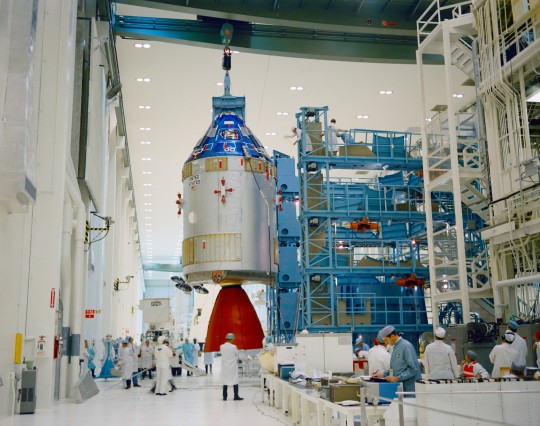
Interior view of the Manned Spacecraft Operations Building, Kennedy Space Center, during the move of Apollo 9 Command and Service Module (CSM-104) Gumdrop from workstand to transfer stand prior to mating to Spacecraft Lunar Module Adapter (SLA-12A).
Date: November 30, 1968
NASA ID: S68-55032
#Apollo 9#Apollo CSM Block II#CSM-104#Gumdrop#Lunar Module#LM-3#Spider#SLA-12A#S NASA#Apollo Program#D-type mission#Assembly#Manned Spacecraft Operations Building#MSOB#Kennedy Space Center#KSC#Florida#November#1968#my post
92 notes
·
View notes
Text
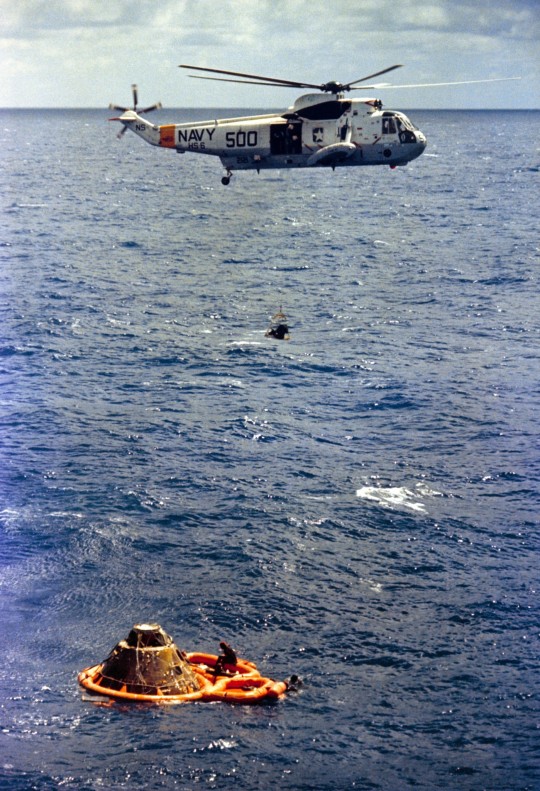
Apollo 14 recovery operations in the South Pacific Ocean - February 9, 1971
#NASA#USN#Apollo 14#Spacecraft#Command Module#Sikorsky#SH-3#Sea King#Moon Mission#Recovery#Helicopter
83 notes
·
View notes
Text

OSIRIS-REx Sample Return
The sample return capsule from NASA’s OSIRIS-REx mission is seen shortly after touching down in the desert, Sunday, Sept. 24, 2023, at the Department of Defense's Utah Test and Training Range. The sample was collected from the asteroid Bennu in October 2020 by NASA’s OSIRIS-REx spacecraft.
Photo Credit: (NASA/Keegan Barber).
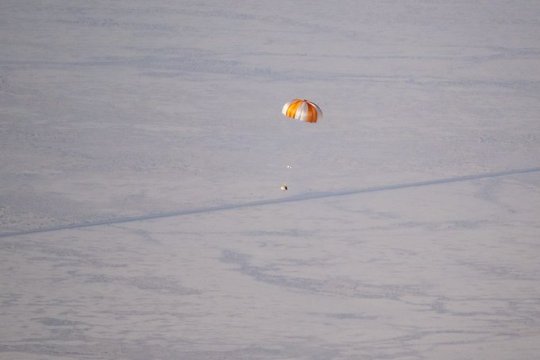
#NASA’s OSIRIS-REx mission#OSIRIS-REx Sample Return#NASA’s OSIRIS-REx spacecraft#asteroid bennu#nasa#nasa photos#nasa picture of the day#space#spaceship#spacecraft#its here
52 notes
·
View notes
Text
#NowPlaying: "Houston We Have a Podcast: Psyche" by NASA
#solar#Nowplaying#Newmusic#SoundCloud#NASA#Houston#Podcast#Johnson#Space#Center#JSC#Psyche#asteroid#mission#spacecraft#science#exploration#system#hip hop#rnb#electronic#jazz#lofi
2 notes
·
View notes
Text


The United States has returned to the lunar surface for the first time in more than 50 years after a privately-built spacecraft named Odysseus capped a nail-biting 73-minute descent from orbit with a touchdown near the moon’s south pole.
Amid celebrations of what NASA hailed “a giant leap forward,” there was no immediate confirmation of the status or condition of the lander, other than it had reached its planned landing site at crater Malapert A.
But later Intuitive Machines, the Texas-based company that built the first commercial craft to land on the moon, said the craft was “upright and starting to send data.”
The statement on X said mission managers were “working to downlink the first images from the lunar surface.”
The so-called “soft landing” on Thursday, which Steve Altemus, the company’s founder, had given only an 80% chance of succeeding, was designed to open a new era of lunar exploration as NASA works towards a scheduled late-2026 mission to send humans back there.
“Welcome to the moon,” Altemus said when touchdown when the 5.23pm touchdown was eventually confirmed, after about 10 minutes in which Odysseus was out of contact.
It was the first time any US-built spacecraft had landed on the moon since NASA’s most recent crewed visit, the Apollo 17 mission in December 1972, and the first visit by commercial vehicle following last month’s failure of Peregrine One, another partnership between the space agency and a private company, Astrobotic.
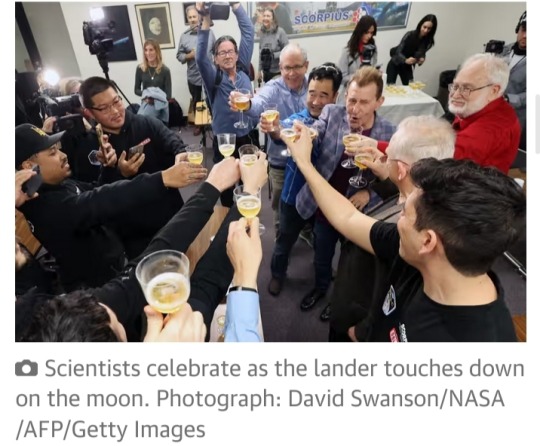
“Today, for the first time in more than a half century, the US has returned to the moon. Today, for the first time in the history of humanity, a commercial company, an American company, launched and led the voyage up there,” Bill Nelson, the NASA administrator, said.
“What a triumph. Odysseus has taken the moon. This feat is a giant leap forward for all of humanity.”
There was no video of Odysseus’s fully autonomous descent, which slowed to about 2.2mph at 33ft above the surface.
But a camera built by students at Florida’s Embry-Riddle Aeronautical University was designed to fall and take pictures immediately before touchdown, and NASA cameras were set to photograph the ground from the spacecraft.
The 14ft (4.3 metres) hexagonal, six-legged Nova-C lander, affectionately nicknamed Odie by Intuitive Machines employees, is part of NASA’s commercial lunar payload services (CLPS) initiative in which the agency awards contracts to private partners, largely to support the Artemis program.
NASA contributed $118m to get it off the ground, with Intuitive Machines funding a further $130m ahead of its February 15 launch from Florida’s Kennedy Space Center on a Falcon 9 rocket from Elon Musk’s SpaceX company.

The IM-1 mission, like the doomed Peregrine effort, is carrying a payload of scientific equipment designed to gather data about the lunar environment, specifically in the rocky region chosen as the landing site for NASA’s crewed Artemis III mission planned for two years’ time.
It is a hazardous area – “pockmarked with all of these craters,” according to Nelson – but chosen because it is believed to be rich in frozen water that could help sustain a permanent lunar base crucial to future human missions to Mars.
Scientists announced last year that they believed tiny glass beads strewn across the moon’s surface contained potentially “billions of tonnes of water” that could be extracted and used on future missions.
The risks are worth it, Nelson told CNN on Thursday, “to see if there is water in abundance. Because if there’s water, there’s rocket fuel: hydrogen, and oxygen. And we could have a gas station on the south pole of the moon.”
The planned operational life of the solar powered lander is only seven days, before the landing site about 186 miles from the moon’s south pole moves into Earth’s shadow.
But NASA hopes that will be long enough for analysis of how soil there reacted to the impact of the landing.
Other instruments will focus on space weather effects on the lunar surface, while a network of markers for communication and navigation will be deployed.
“Odysseus, powered by a company called Intuitive Machines, launched upon a SpaceX rocket, carrying a bounty of NASA scientific instruments, is bearing the dream of a new adventure in science, innovation, and American leadership in space,” Nelson said.


Through Artemis, NASA’s return-to-the-moon program that also has longer-term visions of crewed missions to Mars within the next two decades, the US seeks to stay ahead of Russia and China, both of which are planning their own human lunar landings.
Only the US has previously landed astronauts in six Apollo missions between 1969 and 1972, while five countries have placed uncrewed spacecraft there.
Japan joined the US, Russia, China, and India last month when its Smart Lander for Investigating the Moon (Slim) made a successful, if awkward touchdown after a three-month flight.
Two further Intuitive Machines launches are scheduled for later this year, including an ice drill to extract ingredients for rocket fuel, and another Nova-C lander containing a small Nasa rover and four small robots that will explore surface conditions.
https://www.theguardian.com/science/2024/feb/22/us-moon-landing-odysseus-intuitive-machines
youtube
US returns to lunar surface with for first time in over 50 years
23 February 2024
A spacecraft built and flown by Texas-based company Intuitive Machines landed near the south pole of the moon, the first US touchdown on the lunar surface in more than half a century, and the first ever achieved entirely by the private sector.
Communication with Odysseus seemed be lost during the final stages of the landing, leaving mission control uncertain as to the precise condition and position of the lander, according to flight controllers heard in the webcast.
US returns to lunar surface for first time in over 50 years: ‘Welcome to the moon.’
#Odysseus#Intuitive Machines#Youtube#NASA#Malapert A#moon#moon landing#spacecraft#Steve Altemus#lunar exploration#Bill Nelson#Nova-C lander#Odie#commercial lunar payload services (CLPS)#Artemis#Kennedy Space Center#Falcon 9#Elon Musk#SpaceX#IM-1 mission#Smart Lander for Investigating the Moon (SLIM)#lunar lander#earth
23 notes
·
View notes